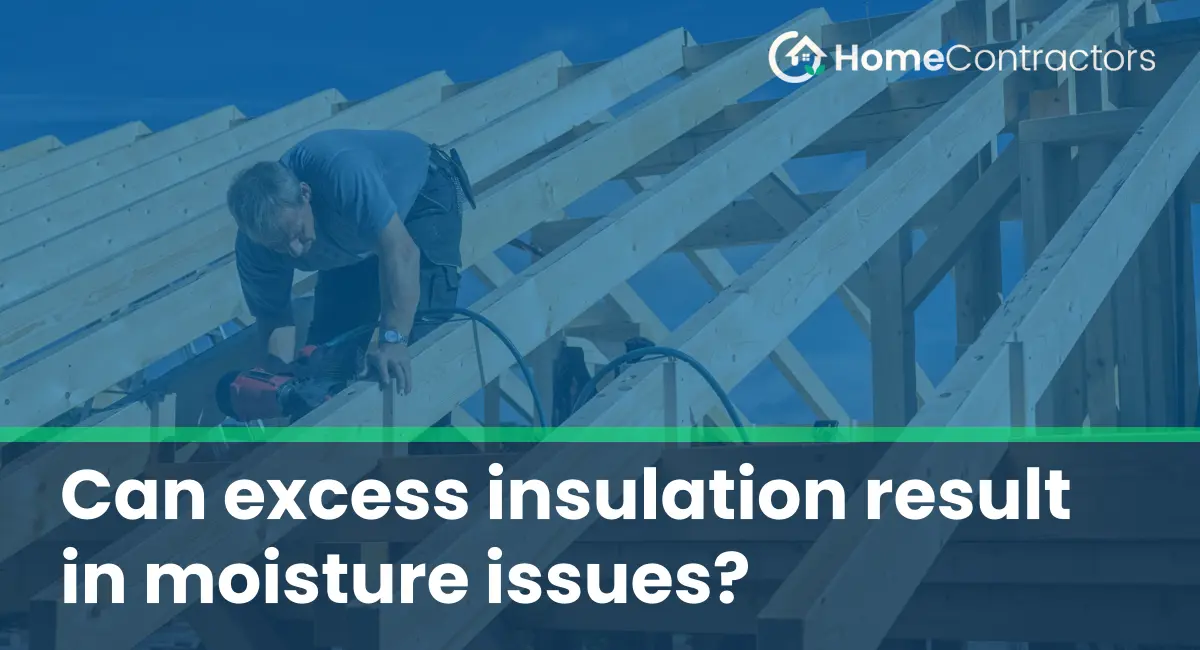Insulation plays a vital role in increasing energy efficiency and reducing heat loss in buildings. However, there can be instances where too much insulation can lead to moisture issues. Excessive insulation can create a barrier that traps moisture inside the building, leading to condensation and potential mold growth. In this article, we will explore the relationship between excess insulation and moisture issues, discussing the causes, potential risks, and preventive measures to ensure a well-insulated and moisture-free environment.
Causes of Moisture Issues in Excess Insulation
1. Inadequate ventilation
When insulation is installed excessively, it can obstruct the natural airflow in buildings. Ventilation plays a crucial role in preventing moisture buildup by allowing fresh air to circulate and moisture-laden air to escape. Inadequate ventilation due to excessive insulation hampers this process, leading to moisture accumulation and potential problems.
2. Vapor barrier placement
Vapor barriers are used to control moisture diffusion through walls and roofs. However, improper placement or incorrect usage of vapor barriers can result in moisture getting trapped within the building envelope. Excessive insulation can exacerbate this issue as it restricts the moisture’s escape route and increases the likelihood of moisture-related problems.
3. Air leakage
Excessive insulation can sometimes lead to improper installation, which may result in gaps or voids. These gaps can act as avenues for air leakage, allowing warm, moist air from inside the building to come in contact with colder surfaces. This contact can cause condensation, leading to moisture issues in the insulation and surrounding areas.
Risks of Moisture Issues
1. Mold growth
Moisture-related problems resulting from excess insulation can create an ideal breeding ground for mold. Mold thrives in damp environments, and excessive moisture provides the perfect conditions for its growth. Mold not only damages the building structure but also poses serious health risks to occupants, including allergies, respiratory issues, and asthma.
2. Structural damage
Excessive moisture in building materials caused by inadequate ventilation or improper vapor barrier placement can lead to structural damage. Moisture can weaken the structure, compromising its integrity and potentially causing rot, warping, or deterioration of the building components such as wood, drywall, or metal.
Preventive Measures
1. Proper insulation installation
To prevent excessive insulation from causing moisture issues, it is crucial to ensure proper insulation installation. This includes following manufacturer guidelines, using the appropriate type and thickness of insulation, and avoiding gaps or voids during the installation process.
2. Adequate ventilation
To mitigate moisture-related problems, adequate ventilation is essential. Properly designed ventilation systems ensure the proper exchange of fresh air and the removal of moisture-laden air. This helps to prevent condensation and reduce the risk of excessive moisture buildup.
3. Vapor barrier placement
Correct placement of vapor barriers is vital in preventing moisture issues. Consult with professionals familiar with building science to determine the appropriate location of vapor barriers. This will ensure that moisture does not get trapped within the building envelope, mitigating the risks of excessive insulation causing moisture-related problems.
While insulation is essential for energy efficiency and comfort, excess insulation can lead to moisture issues within buildings. By understanding the causes and risks of these problems, preventive measures can be implemented. Proper insulation installation, adequate ventilation, and correct vapor barrier placement are key factors in ensuring a well-insulated and moisture-free environment. By following these guidelines, builders and homeowners can enjoy the benefits of insulation without the concerns of excessive moisture accumulation.
